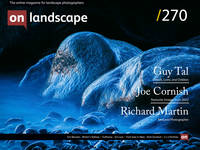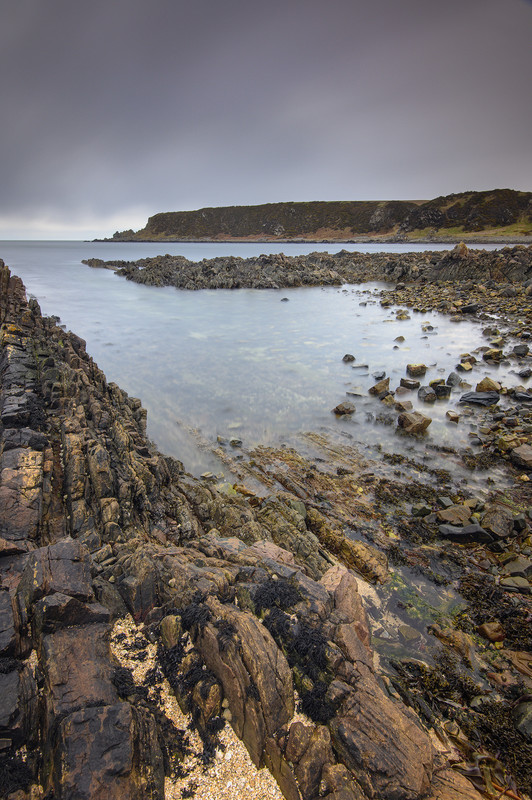A personal view

Ruth Grindrod
Ruth Grindrod is a landscape photographer living in Norfolk in the UK. I like to work in a variety of landscapes but favour sea and coastal photography. I believes that the end product in photography is a quality print and this is what I strive to produce for My work has been published both in the UK and abroad.
ruthgrindrodlandscapephotography.co.uk
The Scottish landscape contains some of the most breathtaking and dramatic scenery in the world. In the past, it was surprisingly not visited a great deal by the British, and then Covid arrived and Scotland was well and truly on the map. A blessing for some and a curse for others. The term Landscape is an interesting one which, as landscape photographers, we use all the time. We all assume we know what the landscape is and often perceive it as wild and dramatic, particularly in Scotland. However, I would argue that the word landscape is a broad term, and as landscape photographers, we should ensure we perceive all landscapes in this way.
So what is a landscape? The European Landscape Convention defines it as an area, as perceived by people, whose character is the result of the action and interaction of natural and/or human factors. This Convention provides a definition of landscape that includes the physical elements of the environment surrounding us, be they natural (such as lochs, rivers, woodlands, mountains and hills) or cultural (such as buildings and the pattern of land use). But it is our experience and perception of the land and sea that turns these physical elements into the landscape.
Landscapes are all around us, from the wonders of Ben Loyal mountain in Sutherland to the more mundane. The “national treasure” which is the landscape of Scotland, is one to be celebrated and preserved but it will change and be developed as times move on.I have enjoyed the landscape of Scotland for decades and witnessed the changes, but I have also wanted to experience the landscape not just in terms of lochs and mountains on the west coast but also the more gentle splendour of the under rated and under visited east coast. It is worth noting, I feel, that not everyone can access the glory of mountain peaks due to age, fitness, fear or a combination! To experience and celebrate other landscapes is something we should develop and cherish. Moray, Nairnshire, and Berwickshire are places I return to again and again, even though no mountains are in sight.
Travelling from the east to the west allows the photographer to witness the geographical variety of the landscape together with the differences in culture and communities.
The future of landscape photography, in my view, depends upon a broad view being cultivated and worked on by those of us that believe all landscapes are worthy of experiencing and recording in a personal way. You may well have seen the recent controversial win of a photo competition by a photo produced by artificial intelligence, so will be aware that soon landscape photos will be able to be produced without some people ever having visited the landscape. It is by no coincidence that many of the AI scenes feature hugely dramatic landscapes with mountains, river and lochs in “Warner brothers”-like light. So, I encourage everyone to expand their view of what is a significant landscape, to visit the east and experience its mellow richness as well as to enjoy those striking and theatrical landscapes of the west.
The East Coast of Scotland
Taken on the East coast at Cullen in Moray. The geological formations are intriguing and offer many opportunities to look for patterns and shapes which can form the basis of a composition. This photo was taken late in the day in March with a soft cloudy sky that contrasted perfectly with rocks and cliffs.
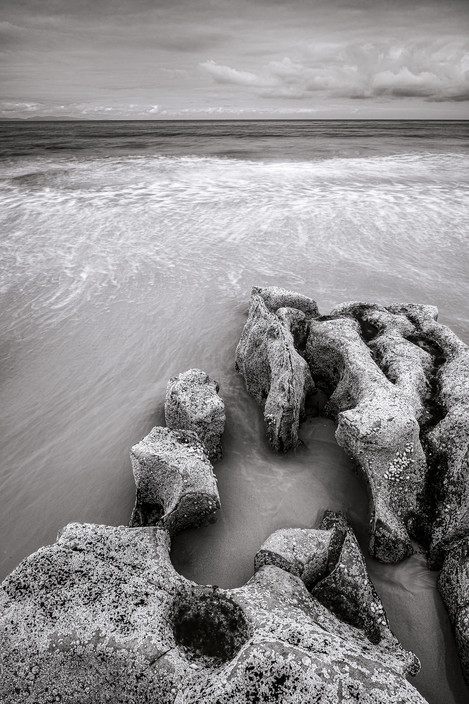
Cove bay, also known as Clashach Cove, is again in Moray near Hopeman. The geology of the area dates back millions of years. This photo concentrates on the shape and curves of the sandstone rocks, which become visible at low and mid tides. I chose to process in black and white as it distils the eye and focuses your gaze on patterns, form, textures and tones. A neutral density filter slowed down the movement of the waves, which juxtaposes well with the rock formations.
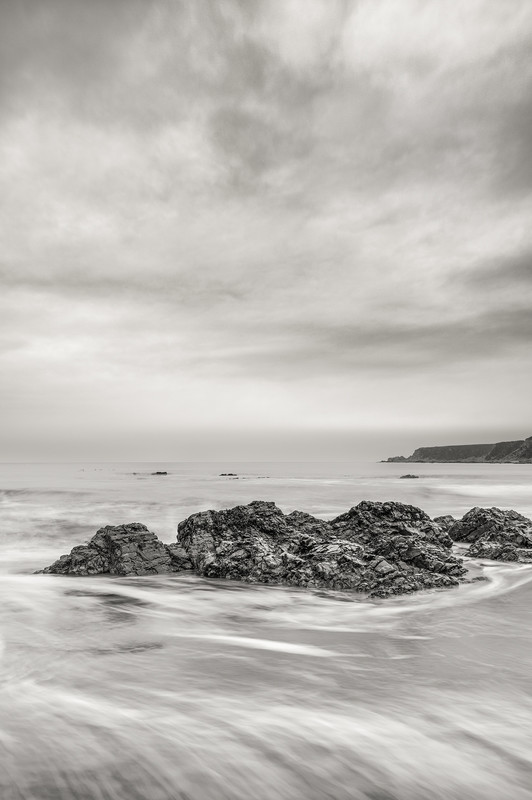
Another black and white image from Cullen, this time the beach. A cloudy, drizzly day provided the perfect backdrop for a longer exposure on this beach dotted with interesting rock formations of varying sizes and shapes. The softness of the sky was an added bonus when creating this mellow, less is more shot.
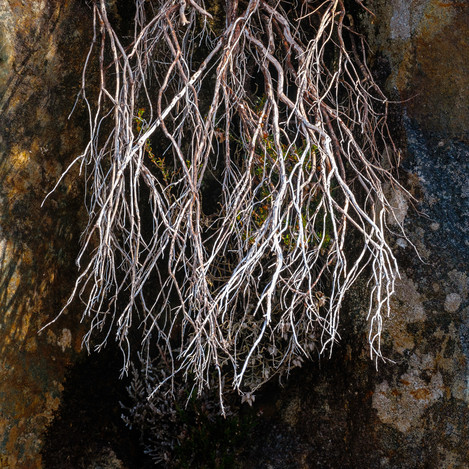
Intimate shots are always quite complex to compose, I find, and this shot lent itself to being square. The twigs were lit, which added to the clarity of this frame and provided some interesting shadows on the left. Shot near Portknockie again in Moray. The hidden green plant behind the twigs provided some extra depth I felt.
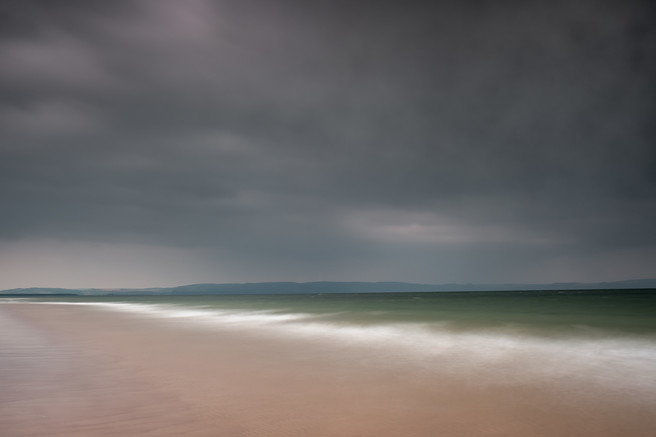
A late August dusk on West beach Nairn in Nairnshire. Heavy rain was approaching from the Black Isle, and the sky was a palette of grey- blue with a hint of magenta. The beach sweeps around to the left, providing a perfect opportunity to emphasise its shape and form but also highlight the big sky that sits over this beach. A neutral density filter was used to slow down both the sky and the sea, creating a painterly feel to this shot.
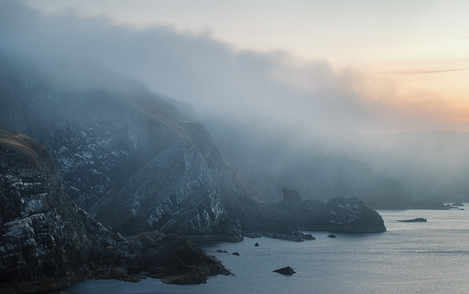
St Abbs Berwickshire, an August haar at Sunset. The fog and mist sweeping in across and between the cliffs, coupled with a pastel sunset, created a truly magnificent scene.
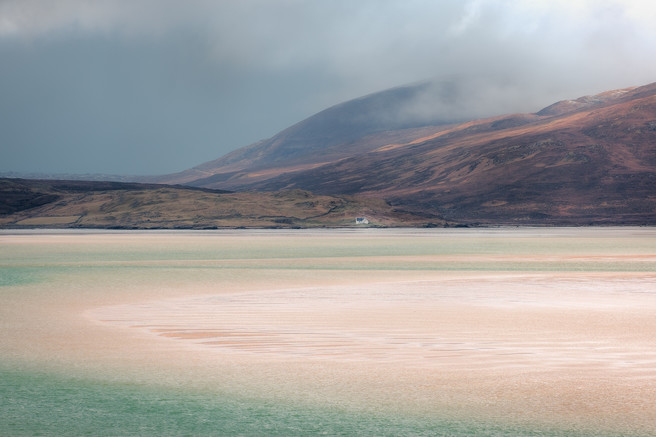
Finally, the far Northwest of Scotland, where lochs and mountains are plentiful. The Kyle of Durness at mid-tide with fast moving light across this huge Kyle. A single house looks on in awe.

